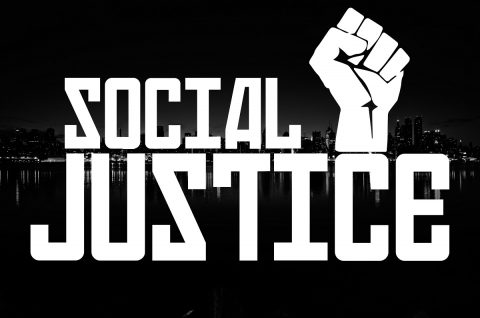World War Two
Published 1 Aug 2020Japan needs resources for its seemingly endless war in China, but where to look for them? And who might have a problem with it? Meanwhile in the Soviet Union, Hitler’s forces have been diverted from the Moscow Road, and are on the move in the north and the south.
Join us on Patreon: https://www.patreon.com/TimeGhostHistory
Or join The TimeGhost Army directly at: https://timeghost.tvFollow WW2 day by day on Instagram @World_war_two_realtime https://www.instagram.com/world_war_two_realtime
Between 2 Wars: https://www.youtube.com/playlist?list…
Source list: http://bit.ly/WW2sourcesWritten and Hosted by: Indy Neidell
Director: Astrid Deinhard
Producers: Astrid Deinhard and Spartacus Olsson
Executive Producers: Astrid Deinhard, Indy Neidell, Spartacus Olsson, Bodo Rittenauer
Creative Producer: Joram Appel
Post-Production Director: Wieke Kapteijns
Research by: Indy Neidell
Edited by: Iryna Dulka
Sound design: Marek Kamiński
Map animations: Eastory (https://www.youtube.com/c/eastory)Colorizations by:
– Julius Jääskeläinen – https://www.facebook.com/JJcolorization/
– Norman Stewart – https://oldtimesincolor.blogspot.com/
– Jaris Almazani (Artistic Man) – https://instagram.com/artistic.man?ig…
– Dememorabilia – https://www.instagram.com/dememorabilia/
– Carlos Ortega Pereira, BlauColorizations – https://www.instagram.com/blaucoloriz…
– Olga Shirnina, a.k.a. Klimbim – https://klimbim2014.wordpress.com/
– Daniel WeissSources:
– Mil.ru
– Narodowe Archiwum Cyfrowe
– Bundesarchiv, CC-BY-SA 3.0 – Bild_101I-265-0024-21A, Bild 146-1976-080-13A
– Yad Vashem 1295/1Soundtracks from the Epidemic Sound:
Gunnar Johnsen – “Not Safe Yet”
Rannar Sillard – “Easy Target”
Johannes Bornlof – “Magnificent March 3”
Fabien Tell – “Break Free”
Brightarm Orchestra – “On the Edge of Change”
Wendel Scherer – “Growing Doubt”
Philip Ayers – “Under the Dome”
Philip Ayers – “Trapped in a Maze”Archive by Screenocean/Reuters https://www.screenocean.com.
A TimeGhost chronological documentary produced by OnLion Entertainment GmbH.
August 2, 2020
Was Roman Concrete Better?
Practical Engineering
Published 29 Oct 2018Comparing modern concrete to that of the western Roman empire.
In this video, I discuss a few modern techniques that help improve design life of concrete, including roller compacted concrete (RCC) and water reducing admixtures (superplasticizers). There are a whole host of differences between modern concrete and that of the western Roman empire that I didn’t have time to go into, including freeze/thaw damage. This is such an interesting topic, so here are some references if you’d like to learn more:
– http://www.romanconcrete.com/
– https://www.usbr.gov/tsc/techreferenc…
– https://en.wikipedia.org/wiki/Roman_c…-Patreon: http://patreon.com/PracticalEngineering
-Website: http://practical.engineeringTonic and Energy by Elexive is licensed under a Creative Commons Attribution License
Source: https://www.youtube.com/watch?v=U6fBP…
QotD: Marx’s imperfect economic understanding
We’re at the 200th anniversary of Karl Marx’s birth – also the 201st of Ricardo’s publication, the 242nd of Smith’s Wealth of Nations. And it has to be said that the latter two were more perceptive analysts of the human condition and also contributed vastly more to human knowledge and happiness. Most of the bits that Marx got right in economics were in fact lifted from those other two. The one big thing he got wrong was not to believe them about markets.
We can find, if we look properly, Marx’s insistences of how appalling monopoly capitalism would be in Smith. They’re both right too, it would be appalling. But we do have to understand what they both mean by this. In modern terms they mean monopsony, more specifically the monopoly buyer of labour. What is it that prevents this? Competition in the market among capitalists for access to the labour they desire to exploit. That very competition decreasing the amount of grinding of faces into the dust they’re able to do. Henry Ford’s $5 a day is an excellent example of this very point.
Ford wanted access to the best manufacturing labour of his time. He also wanted to have a lower turnover of that labour, lower training costs. So, he doubled wages (actually, normal wages plus a 100% bonus if you did things the Ford Way) and got that labour. At which point all the other manufacturers had to try and compete with those higher wages in order to get that labour they wanted to expropriate the sweat of the brow from. Marx did get this, he pointed out that exactly this sort of competition, in the absence of a reserve army of the unemployed, is what would raise real wages as productivity improved.
Smith also didn’t like the setting of wages as it precluded just such competition and such wage rises.
Where Marx went wrong was in not realising this power of markets. He knew of them, obviously, understood the idea, but just didn’t understand their power to ameliorate, destroy even, that march to monopoly capitalism.
[…]
The thing we really need to know on this bicentenary about Karl Marx is that he was wrong. He just never did grasp the power of markets to disrupt, even prevent, the tendencies he saw in capitalism. Specifically, and something we all need to know today, the power of competition among capitalists as the method of improving the lives of all us wage slaves. You know, that’s why we proletariat today, exploited as we are and ground into the dust, are the best fed, longest lived and richest, in every sense of the word, human beings who have ever existed. Something which is, if we’re honest about it, not a bad recommendation for a socio-economic system really. You know, actually working? Achieving the aim of improving the human condition?
Tim Worstall, “Marx At 200 – Yes, He Was Wrong, Badly Wrong”, Continental Telegraph, 2018-05-04.






